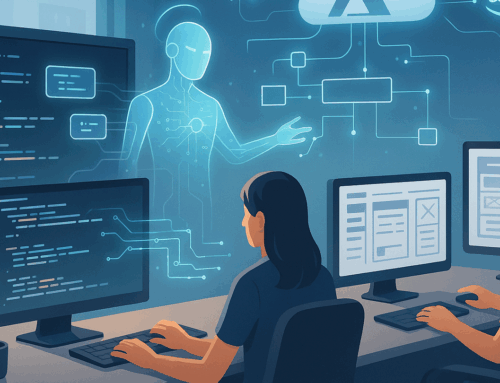When Imani Miles’ Apple Watch started beeping nonstop, her mother knew something was wrong. A trip to the ER confirmed it—doctors removed Imani’s appendix and discovered a rare neuroendocrine tumor in the process. That early alert from her Apple Watch helped save her life.
For patients like Imani, real-time data can mean the difference between timely intervention and critical delays. But in healthcare, the challenge of capturing and processing that data securely and accurately is no small feat.
Let’s take a closer look at the role of real-time data in healthcare app design—and why CTOs and CPOs should make it a priority.
The Importance of Real-Time Data in Healthcare
With instant access to health metrics, providers can make faster, more informed decisions. When Imani’s Apple Watch flagged her abnormal heart rate, doctors didn’t have to start from scratch; they already had relevant, up-to-date data to guide them. Similarly, HCA Healthcare’s S-P-O-T (Sepsis Prediction and Optimization of Therapy) system uses AI to analyze real-time clinical data. It alerts caregivers when patients show early signs of sepsis so they can act quickly to prevent severe complications.
But it’s not just about faster responses. More and more, healthcare organizations are providing patients with mobile apps and wearables that track vital signs and medication schedules in real-time. When patients can see how their choices and medications directly affect their health, they are more motivated to stick to their treatment plans.
Beyond patient care, real-time data integration is streamlining operations. Integrated data from Electronic Health Records (EHRs), IoMT devices, and wearable tech is helping organizations reduce inefficiencies and improve workflows. Massachusetts General Hospital (MGH), for example, teamed up with a healthcare analytics firm to analyze patient flow, staffing, and equipment use. The result? Shorter wait times, better patient experiences, and improved staff productivity.
Integration Challenges in Healthcare Software Development
Merging real-time data from IoT-enabled devices with traditional EHR systems isn’t easy. Different formats, protocols, and standards often mean you need custom solutions just to get everything to work together. When systems don’t play nice, data can get messy leading to misinformed decisions, delayed treatments, or even incorrect diagnoses. To avoid that, developers need to standardize data across platforms and use smart algorithms to ensure everything stays accurate in real-time.
Then there’s the compliance side. Regulations like HIPAA dictate how real-time data is collected from IoT devices, stored in EHR systems, and shared between providers. The Privacy Act adds another layer, with strict rules on how personal health information is handled.
Ensuring privacy and staying compliant can sometimes slow things down, but it’s essential. Developers have to build in data encryption, secure authentication, and strict access controls at every stage to protect patient information—and to keep healthcare providers and patients confident in the system
Real-Time Data and UX: Best Practices for Mobile Healthcare Apps
Real-time data gives developers real insights into how users interact with an app—what frustrates them, what features they love, and what they need most. This is especially useful in an agile development environment, where updates are guided by actual user behavior, not guesswork or feedback that comes too late. By seeing in real-time where users spend their time or hit roadblocks, designers can make smarter decisions to create healthcare apps that aren’t just functional, but truly user-friendly.
Here are a few UX best practices driven by real-time data:
- Live Chat and Video Consultations: Real-time communication tools make it easy for patients to connect with healthcare providers for instant support and advice when they need it most.
- Personalized Health Dashboards: Customizable dashboards let patients track their health metrics in real-time so they stay on top of their care.
- Instant Notifications and Alerts: Real-time alerts keep patients and caregivers in the loop—whether it’s a reminder for medication, an upcoming appointment, or a warning about a critical health issue.
The Future of Predictive Analytics in Healthcare
Real-time data is pushing healthcare from reactive to preventative care. This means better outcomes for patients, as providers catch potential issues early and step in before health conditions get worse. It also allows for more personalized care—treatment plans that actually fit each patient’s needs.
Looking ahead, CTOs and CPOs in the industry need to keep an eye on key trends. The combination of genetic data, EHRs, and real-time health data will allow AI to spot patterns we couldn’t see before. As machine learning gets smarter with more data, it’ll pick up on subtle changes in a patient’s health, giving providers the chance to act fast and manage chronic conditions more effectively. That’s why it’s so important to get your integration strategies right—your data needs to be clean, consistent, and accurate.
5G and robotic process automation (RPA) will also play a big role. Faster data transmission will make real-time monitoring and telemedicine smoother, and RPA will cut out repetitive admin work so providers can focus more on care. Patients increasingly expect more personalized, accessible healthcare and these technologies will help you stay competitive
CTOs and CPOs need to lean into these strategies now. Predictive, data-driven apps will be the key to delivering personalized care and operational efficiency in the future of healthcare.
Wrapping Up
Real-time data has the power to change how healthcare works—making care faster, more personal, and more efficient. But integrating data from different systems, ensuring security, and staying compliant with regulations aren’t easy tasks.
When done right, real-time data leads to faster interventions, better treatment plans, and smoother workflows that make a real difference for both patients and providers.
For healthcare leaders, now’s the time to focus on patient-centered, real-time data strategies. Ascendle can help you build the solutions to get there.






